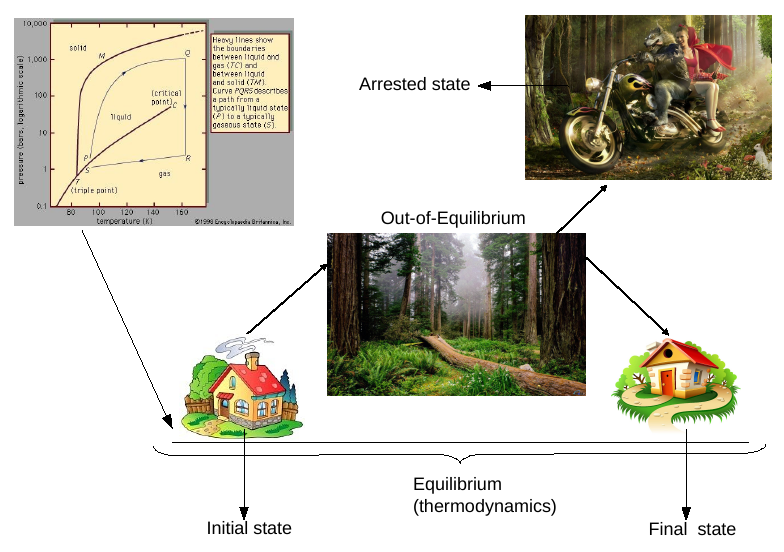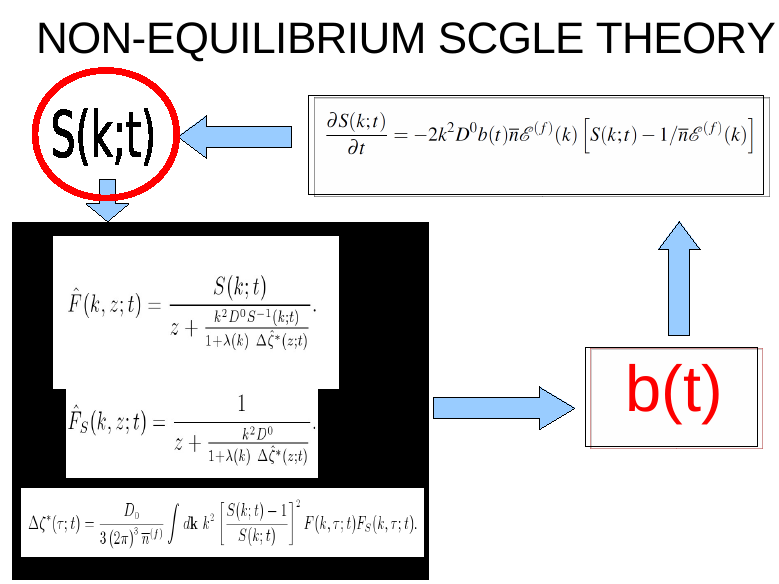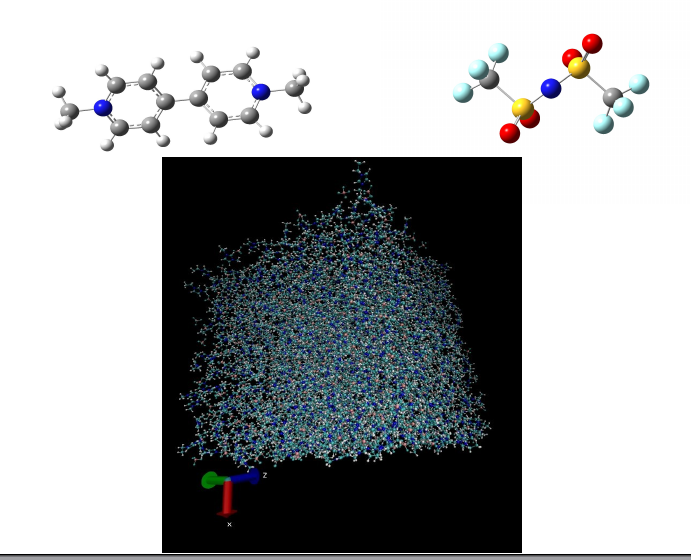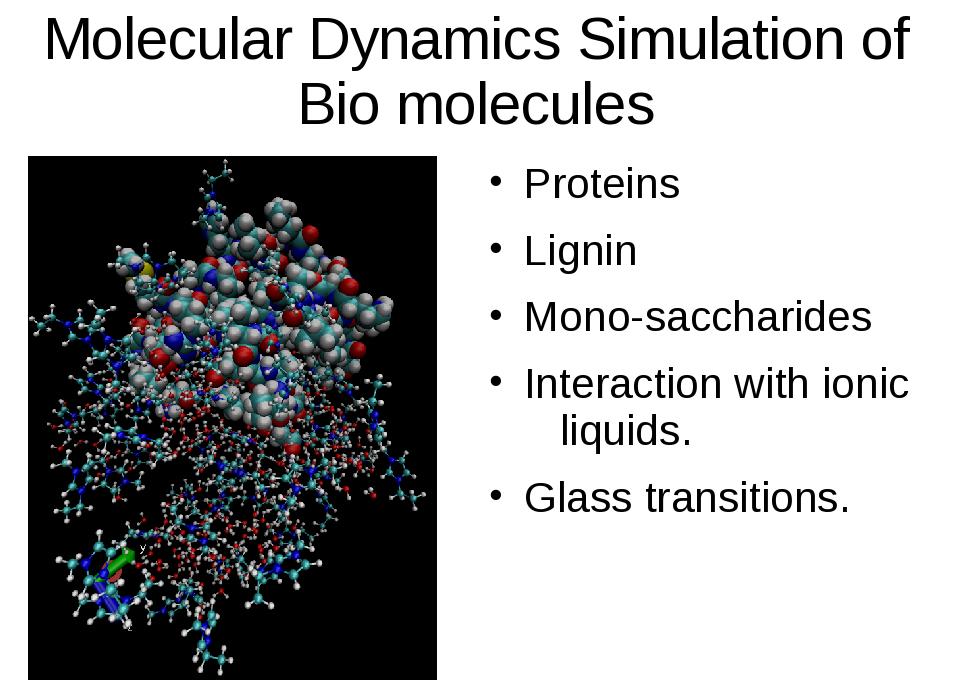
Home People Research Publications Events History
The standard statistical thermodynamics only deals with equilibrium states, all its concepts imply that the system finds a stationary state which maximizes entropy. Despite the outstanding predictive power of such a theoretical framework, time dependent relaxation processes are out of the scope of Statistical thermodynamics. However, in many real situations, the material needs to relax through many transient states before finding the equilibrium state. Describing the evolution of a system from an initial state to the final state is the objective of non-equilibrium thermodynamics. We are contributing with the development of a standard non-equilibrium thermodynamics able to deal with complex relaxation processes.

We are also interested in developing new ways to characterize the structural and dynamical correlation functions of complex liquids using simplified models. We combine theoretical equations (like Ornstein-Zernike equation) with molecular dynamics simulations to develop improved tools to describe and predict the static and dynamic behavior of soft matter.

Ordinary materials can be classified into two broad categories: those who have reached their thermodynamic equilibrium state and those which have not. Thermodynamic equilibrium means that the system chooses the state in which the entropy is a maximum. Materials in equilibrium have stationary properties, while the non-equilibrium materials evolve until they can achieve the equilibrium state. Different materials have different relaxation times and depend on several factors such as the molecular nature of the material, the process used to obtain the final state, restrictions, etc. However, sometimes the equilibration time can be very long, leaving the material in a non-equilibrium condition. This diverging condition of the relaxation time is known as dynamic arrest and is fundamental for the understanding of common materials like glass, in which the molecules should be accommodated in an orderly (crystalline) arrangement that is frustrated due to dynamic conditions, giving an amorphous solid. The dynamic arrest phenomenon occurs not only in the onset of glass transition but also in the dynamics of colloidal dispersions, frustrated magnets, granular packing, folding complex polymers (like proteins), among others. Although in everyday life we encounter many "dynamically arrested" materials there is not a well established theory able to understand these materials, much less predict their properties or the conditions under which they form. Several members of our group have developed a first-principles theory, which is basically an extension of the irreversible thermodynamics of Onsager, to study the evolution of a thermodynamic system from its initial state to the final state. The first applications to systems of hard spheres distinguish the conditions under which the equilibration is possible in contrast with those in which the final state is arrested and some properties continue changing, a phenomenon known as aging. Our goal is to understand the non-equilibrium phenomena in a deep manner and use this theoretical framework in the description of out-of-equilibrium materials.

Room-Temperature molten salts, or simply Ionic Liquids, are a novel class of solvents with many interesting properties. These systems are liquid at temperatures less than 100 C and have potential applications as solvents in catalysis, electrochemistry, fuel conversion, among others. Due to their high viscosity, our main interest is focused in the study of ionic liquids as glass-formers.

Our group is interested in the study of complex fluids composed by bio molecules in solution, as proteins and sugars dissolved in water, using molecular dynamics simulations. Our main aim is, using the molecular dynamics simulation results, the construction of theoretical models that mimic the essential properties of complex liquids and calculate their structural and dynamical properties. In addition we want to investigate the dynamic arrest transitions of bio-molecules in solution.
